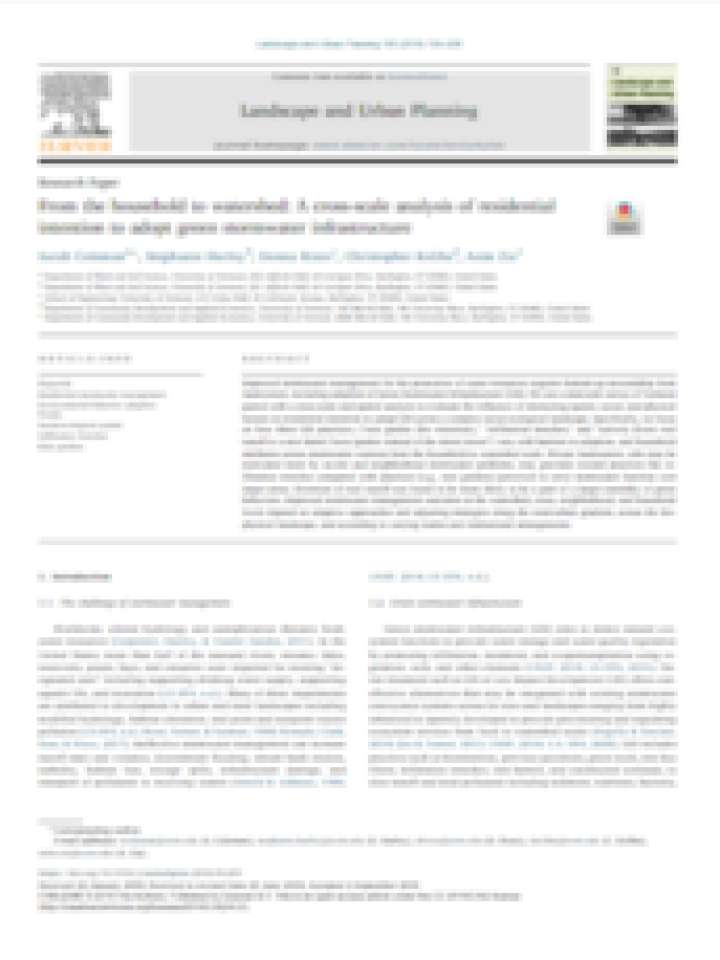From the household to watershed: A cross-scale analysis of residential intention to adopt green stormwater infrastructure
Improved stormwater management for the protection of water resources requires bottom-up stewardship from landowners, including adoption of Green Stormwater Infrastructure (GSI). The researchers use a statewide survey of Vermont paired with a cross-scale and spatial analysis to evaluate the influence of interacting spatial, social, and physical factors on residential intention to adopt GSI across a complex social-ecological landscape. Specifically, the researchers focus on how three GSI practices, (“rain garden (bio retention),” “infiltration trenches,” and “actively divert roof runoff to a rain barrel/lawn/garden instead of the street/sewer”) vary with barriers to adoption, and household attributes across stormwater contexts from the household to watershed scale. Private landowners, who may be motivated more by on-site and neighborhood stormwater problems, may gravitate toward practices like infiltration trenches compared with practices (e.g., rain gardens) perceived to serve stormwater function over larger areas.
The study finds that diversion of roof runoff was found to be more likely to be a part of a larger assembly of green behaviours. Improved stormwater management outcomes at the watershed, town, neighborhood, and household levels depend on adaptive approaches and adjusting strategies along the rural-urban gradient, across the bio-physical landscape, and according to varying norms and institutional arrangements.
Explore further
